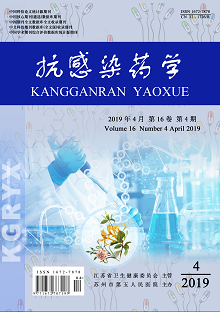GU Qiu-ping, XIE Jun-feng, LIU Jin-jin, TANG Jian-hua, LIU Xue
Objective: To study the improvement effects of Resveratrol in inflam-matory bowel disease in rats by activating AMPK signaling pathway in vitro. Methods: 48 healthy SD rats were randomly divided into control group (n=12), model group (n=12), mesalazine group (n=12) and resveratrol group (n=12). In addition to the control group, all rats were treated with TNBS for modeling, while the control group was treated with ethanol solution of the same volume. After the success of the modeling, the salad oxazine group rats are given the salad oxazine 2 g/(kg·d) to fill the stomach, resveratrol group rats given 100 mg/(kg·d) to fill the stomach, the normal group and model group rats given distilled water 100 mg/(kg·d) to fill the stomach; observing between groups of rats during the period of feeding body quality, traits and stool occult blood; based on the disease activity and comparing each group rats (DAI) rating scale differences; and in rats of groups its fasting venous blood was taken from the 7 d by ELISA method to detect the rat serum PGE2, NO, IL-1β. TNF-α levels were detected, and the colons of rats were sacrificed and the changes of SIRT1, AMPK and NF-кB p65 protein levels in the intestinal mucosa were detected by Western Blotting. Results: DAI scores of the model group, mesalazine group and resveratrol group were all higher than those of the control group (P<0.05). DAI scores of mesalazine group and resveratrol group were significantly lower than those of model group (P<0.05). DAI score of the resveratrol group was lower than that of the mesalazine group (P<0.05). Model group, the salad lamictal and resveratrol group rats PGE2, NO, IL-1β, TNF-α level measured value is higher than the control group (P<0.05). And the salad lamictal and resveratrol group rats PGE2, NO, IL-1β, TNF-α level measured values were significantly lower than those of model group (P<0.05). Resveratrol group of PGE2 in rats, NO, IL-1β, TNF-α level measured values are lower than the salad oxazine group (P<0.05). The SIRT1 and AMPK levels in the intestinal mucosa of the model group, mesalazine group and resveratrol group were lower than those of the control group (P<0.05), and the NF-кB p65 protein levels were higher than those of the control group (P<0.05). The SIRT1 and AMPK levels in the mesalazine and resveratrol groups were significantly higher than those in the model group (P<0.05), and the NF-кB p65 protein levels were lower than those in the model group (P<0.05).The SIRT1 and AMPK of the resveratrol group were significantly higher than that of the mesalazine group, and the NF-кB p65 protein was lower than that of the mesalazine group (P<0.05). Conclusion: Resveratrol can improve inflammatory bowel disease and reduce the expression of inflammatory factors. The mechanism may be related with the fact that resveratrol activates SIRT1, increases AMPK and inhibits NF-кB p65 protein.
